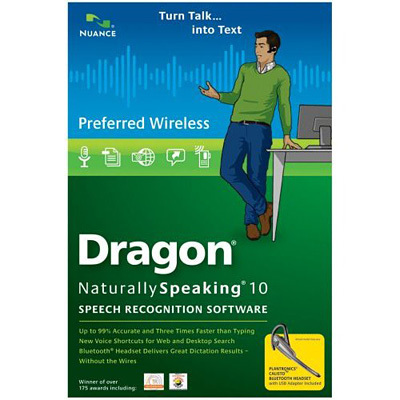How to do a top-ten list for assistive technology? First, I wanted the list to reflect a universal design focus. Next, I wanted the technology to be new and presently available; I considered not just a technology’s use but also its wider social impact (I know, I am missing some really great products – another list). To prioritize the list would be challenging and to loose focus that it isn’t popularity, influence, availability or innovation, it’s about inclusivity. Finally, I gathered similar technologies under single headings.
- Tablet Platform Computing (presently the iPad): Though in its infancy, tablets are the way of the future. Apps, such as Dragon, take advantage of the platform and often update older technologies for this new medium. Expect extraordinary assistive technology such as eye gaze switching arriving with a built-in camera, and external devices that can connect through input ports, WiFi or Bluetooth.
- SmartPhones (iPhone, Android, Blackberry, Windows Mobile, Palm): Same as tablets only smaller and more portable. Commonly included GPS offers excellent navigation that might one day soon help you navigate complex building interiors. Video chatting will be more interesting not when I can look at your face but when I can see what you are looking at.
- Speech-to-Text: (Dragon NaturallySpeaking for Windows, Dictate for Mac and Wynn): These make it possible to input speech and communicate.
- Text-to-Speech / TTS (JAWS / VoiceOver / Kindle) Reading depended on Braille, devices such as the Optacon or audio formats. Now there is hardly a device that can’t get what you want and read it to you.
- Apple & Microsoft: These two giants have long been committed to assistive technology and universal design. Text-to-speech, magnification, audio and visual indicators, variable input options, and simplified user interfaces all support exploring and learning. And, many of these features are already built in!
- Social Media (Facebook, twitter, Skype, IM): Although assistive devices might be necessary to use access social media, once connected, one has amazing access to a global community.
- Price & Availability: Internet shopping makes finding special products easier and makes pricing and design features competitive. See: Humanware, Maxi-Aids, Access Ingenuity, Gus, EnableMart, AssistiveWare, Cambium, and AbleData. Low-fi SmartPhone apps cost only a few dollars: one app can scan a barcode and describe the product; in some cases it can tell me where to get it for less money and how far I’ll have to travel.
- Stuff (OK, bad name): These are the objects, devices and gadgets you have in your home, or that get you from point A to point B, or that monitor your safety, or that make it possible to automate, or that interface with products making them usable, or that enhance and ease learning, travel and shopping, or that keep you comfortable, clean and fed, or make public places accessible.
- Universal Design: Universal design isn’t directly an assistive technology, however, its widespread application means less of a financial burden on a person living with a disability. It means wider access and less marginalization from poor design. It tends to benefit all who use it, not just those who need it.
- Past Respects: The Optacon, Braille, radio, closed captioning, fax machines, Prentke, Kurzweil, trackball, and the list goes on – and that’s just USA.
I would like to thank the many members of the Linkedin Assistive Technology Professionals group who shared their expertise, experience and opinions in this discussion.
“The better it is done, the less it is noticed.”
Six Part Assistive Technology Series:
Assistive Technology & UD, Part I: What Is It – 9/13/10
Assistive Technology & UD, Part II: Physical – 9/20/10
Assistive Technology & UD, Part III: Hearing Loss – 9/27/10
Assistive Technology & UD, Part IV: Vision Loss – 10/4/10
Assistive Technology & UD, Part V: Communication, Intellect & Development – 10/18/10
Assistive Technology & UD, Part VI: Top-Ten List – 10/25/10

